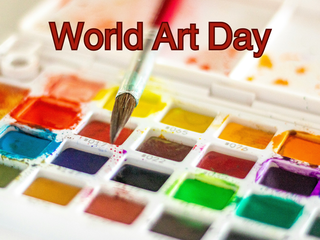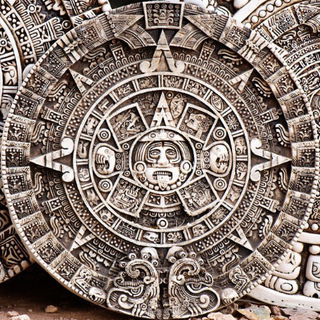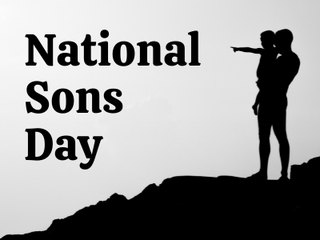The Islamic Calendar, officially known as the Hijri Calendar (ٱلتَّقْوِيم ٱلْهِجْرِيّ at-taqwīm al-hijrīy), and also called the Arabic or Muslim calendar, is used by people who observe the Islamic faith to determine Islamic holidays, rituals, and the period of fasting.
The calendar has 354 or 355 days and is a lunar calendar. This means that the counting of the days is done by observing the different moon phases.
The Islamic Calendar is the official calendar in Saudi Arabia and some countries in the Gulf. Most Muslim countries use this calendar for religious purposes but have the Gregorian calendar as their civil calendar.
What year is it in the Islamic Calendar?
The Islamic Calendar is currently in the year 1445 AH, which in the Gregorian calendar corresponds to the period ranging from July 2023 to July 7, 2024.
History of the Islamic Calendar
The Islamic Calendar begins its counting from the year 622 AD This marks the year of the Prophet's migration, or hijra, which gives the calendar its official name.
The calendar was created in 638 AD, during the reign of Khalifa Umar ibn al-Khattab. He created this calendar to adjust the counting of the time and days with respect to some Islamic religious observances.
The chronology of the Islamic Calendar is based on some excerpts from the Quran.
How does the Islamic Calendar work and how is it calculated?
Each month in the Islamic Calendar lasts for the duration of a moon cycle, which means that it lasts from the start of a New Moon until the next.
The Months in the Islamic Calendar
A new month starts in the Islamic Calendar when the Waxing Crescent Moon is observed after sunset. If the moon is observed on the 29th day of its cycle, the new month begins on the next day. If a crescent moon is not observed, then a new month begins after the 30th day of the cycle.
This means that each month in the Islamic Calendar is either 29 or 30 days long. In total, there are 12 months on the calendar.
Traditionally, the Crescent Moon has to be sighted by a committee or an important person so that the length of each month can be determined. However, sometimes there is low visibility due to the meteorological conditions, and the Crescent Moon can't be seen even if it's there. This has an impact on the length of the months, as they may be extended by a day, which in turn affects the dates of Muslim holidays, which are sometimes changed with short notice.
Some countries and communities use a modernized version of this system, so months may start on different days in different countries.
Learn more about the Moon Phases.
These are the 12 months in the Islamic Calendar:
- Muharram
- Safar
- Rabi'a al-awwal
- Rabi'a ath-thani
- Jumada al-awla
- Jumada al-akhirah
- Rajab
- Sha'ban
- Ramadan
- Shawwal
- Dhu al-Qa'da
- Dhu al-Hijjah awwal
Four of these months, Dhul-Qa'dah, Dhu'l-Hijjah, Muharram and Rajab, are sacred months in the Islamic Calendar. Before Islam, these were months when fighting was forbidden.
The month of Ramadan is one of piety, where Muslims fast, pray, and read the Quran. At the beginning of Shawwal, there is Eid-al-Fitr, a holy celebration. The last month, Dhu al-Hijjah, is the month for pilgrimage, after which there is Eid-al-Adha.
The Tabular Islamic Calendar
In the 8th century CE, Muslim scholars developed the Tabular Islamic calendar. This was to make it easier to determine the length of one month, without having to rely on observing the moon phases.
In this system, the calendar also has 12 months, however, the length of each month is already determined. Months that fall on uneven numbers (1st, 3rd, 5th...) have 30 days, while months on even numbers (2nd, 4th, 6th...) are 29 days long.
Unlike the traditional Hijri Calendar, the Tabular Islamic calendar has regular leap years. On a leap year, one day is added to the last month of the year, Dhu al-Hijjah, which makes it 30 days long. While a common year in this calendar is 354 days long, a leap year has 355 days. There are 11 leap years in a 30-year cycle, so one leap day is added every 2 to 3 years.
The Tabular Islamic Calendar syncs the Islamic year with the lunar year, and not with the solar year, as it happens on other calendars.
The days of the week in the Islamic Calendar
- Yawm al-Ahad (يوم الأحد) - Sunday
- Yawm al-Ithnayn (يوم الاثنين) - Monday
- Yawm ath-Thulatha (يوم الثلاثاء) - Tuesday
- Yawm al-Arba'a (يوم الأربعاء) - Wednesday
- Yawm al-Khamis (يوم الخميس) - Thursday
- Yawm al-Jumu'ah (يوم الجمعة) - Friday
- Yawm as-Sabt (يوم السبت) - Saturday
In Muslim countries, the week starts on Sunday and ends on Saturday. A working week is from Sunday until Thursday, and the rest days, or weekends, are Friday and Saturday.
Holidays and Observances in the Islamic Calendar
All holidays in the Islamic Calendar begin at sundown, on the night before the actual date of the event.
Al-Hijra — The Islamic New Year.
Eid al-Adha — Festival of Sacrifice, marking the sacrifice of Abraham.
Eid al-Fitr — Marks the end of the Muslim Month of Fasting (Ramadan).
Prophet's Birthday - Celebrating the birth of the Prophet Muhammad.
Ramadan - The month of fasting.
Learn More About Other Calendars











